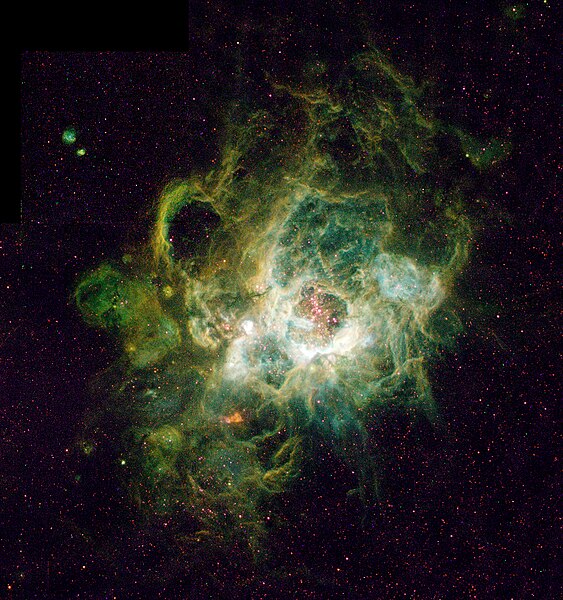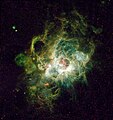Fil:Nursery of New Stars - GPN-2000-000972.jpg

Størrelse af denne forhåndsvisning: 563 × 600 pixels. Andre opløsninger: 225 × 240 pixels | 450 × 480 pixels | 721 × 768 pixels | 1.127 × 1.201 pixels.
Fuld opløsning (1.127 × 1.201 billedpunkter, filstørrelse: 2,42 MB, MIME-type: image/jpeg)
Filhistorik
Klik på en dato/tid for at se filen som den så ud på det tidspunkt.
| Dato/tid | Miniaturebillede | Dimensioner | Bruger | Kommentar | |
|---|---|---|---|---|---|
| nuværende | 8. aug. 2019, 20:12 |  | 1.127 × 1.201 (2,42 MB) | BevinKacon | Reverted to version as of 01:11, 9 April 2009 (UTC) bad upscale by new user |
| 3. aug. 2019, 15:38 |  | 1.690 × 1.800 (2,84 MB) | Armin3636 | بالا بردن کیفیت | |
| 29. jul. 2019, 14:08 |  | 1.024 × 1.091 (1,21 MB) | Armin3636 | بارگذاری کامل پرونده | |
| 9. apr. 2009, 03:11 |  | 1.127 × 1.201 (2,42 MB) | BotMultichillT | {{Information |Description={{en|1=This is a Hubble Space Telescope image (right) of a vast nebula called NGC 604, which lies in the neighboring spiral galaxy M33, located 2.7 million light-years away in the constellation Triangulum. This is a site where |
Filanvendelse
Den følgende side bruger denne fil:
Global filanvendelse
Følgende andre wikier anvender denne fil:
- Anvendelser på af.wikipedia.org
- Anvendelser på anp.wikipedia.org
- Anvendelser på an.wikipedia.org
- Anvendelser på ar.wikipedia.org
- Anvendelser på arz.wikipedia.org
- Anvendelser på ast.wikipedia.org
- Anvendelser på az.wikipedia.org
- Anvendelser på ba.wikipedia.org
- Anvendelser på be.wikipedia.org
- Anvendelser på bg.wikipedia.org
- Anvendelser på bn.wikipedia.org
- Anvendelser på bs.wikipedia.org
- Anvendelser på ca.wikipedia.org
- Anvendelser på ceb.wikipedia.org
- Anvendelser på ce.wikipedia.org
- Anvendelser på cs.wikipedia.org
- Anvendelser på de.wikipedia.org
- Anvendelser på de.wikibooks.org
- Anvendelser på diq.wikipedia.org
- Anvendelser på el.wikipedia.org
Vis flere globale anvendelser af denne fil.
